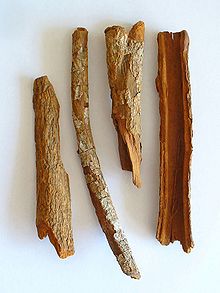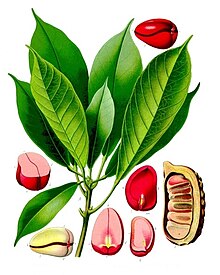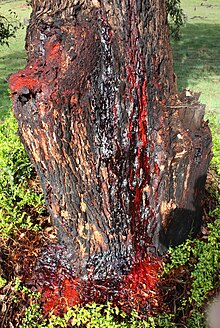Phlobaphene
[5] Phlobaphenes from hawthorn fruits (Fructus Crataegi) may have a specific action on the coronary circulation[citation needed].[6] Natural phlobaphenes are the common bark, pericarp, cob glume and seed coat (testa) pigments.[18] Phlobaphenes are not present in the model plant Arabidopsis thaliana but can be studied as the pigment responsible for the red color in some monocot cereals, including wheat,[19] maize[20] or sorghum.This type of extract is rich in condensed tannins of natural high molecular weight (phlobaphenes), which are not easily soluble.The main properties of these extracts are: a very rapid penetration, a high tannin content and a relatively low percentage of non-tannins.




mineral acidsGreek rootshawthorncoronary circulationhuminspericarppigmentsphellemsuberinCinchona officinaliscinchonacinchotannic acidredwoodsSequoia sempervirensquercitannic acidquercitronCuscuta europaeacommon tormentilkola nutchocolate liquorCrataegusCorymbia calophyllakinotannic acidsorghumflavan-4-olstranscriptional activatordihydroflavonol 4-reductasedihydroflavonolssuppressorchalcone synthasechalcone isomerasedihydroflavonol reductase3-deoxyflavonoidscondensed tanninshydrochloric acidcocoa solidsquebracho woodsulfiting processphloroglucinolm-phenylenediamineneradolJames A. DukeWayback MachineProcyanidinsProdelphinidinsProfisetinidinsProguibourtinidinsPromelacacinidinsPropelargonidinsProrobinetidinsProteracacinidinsTannin sourcesTannosome